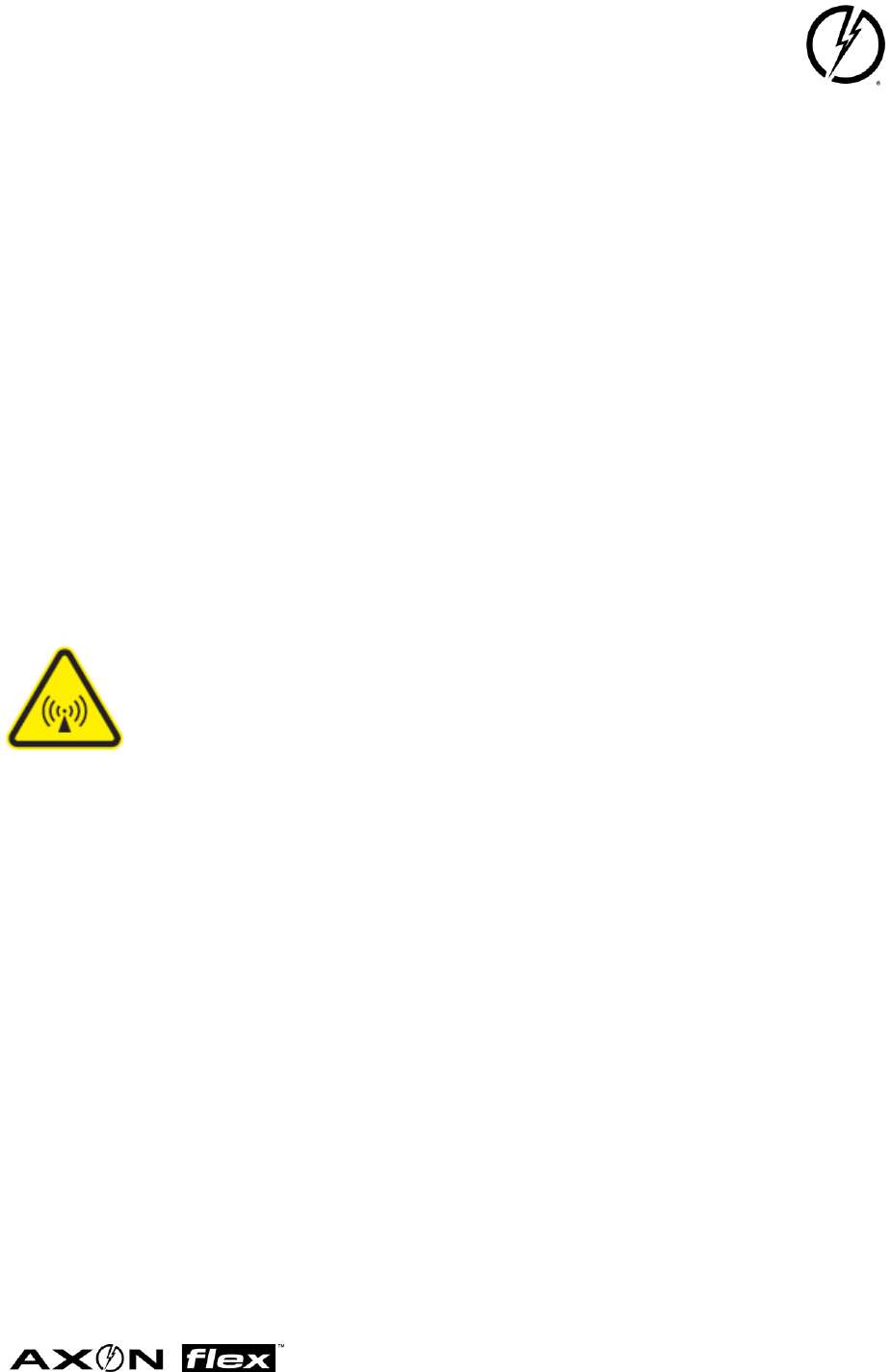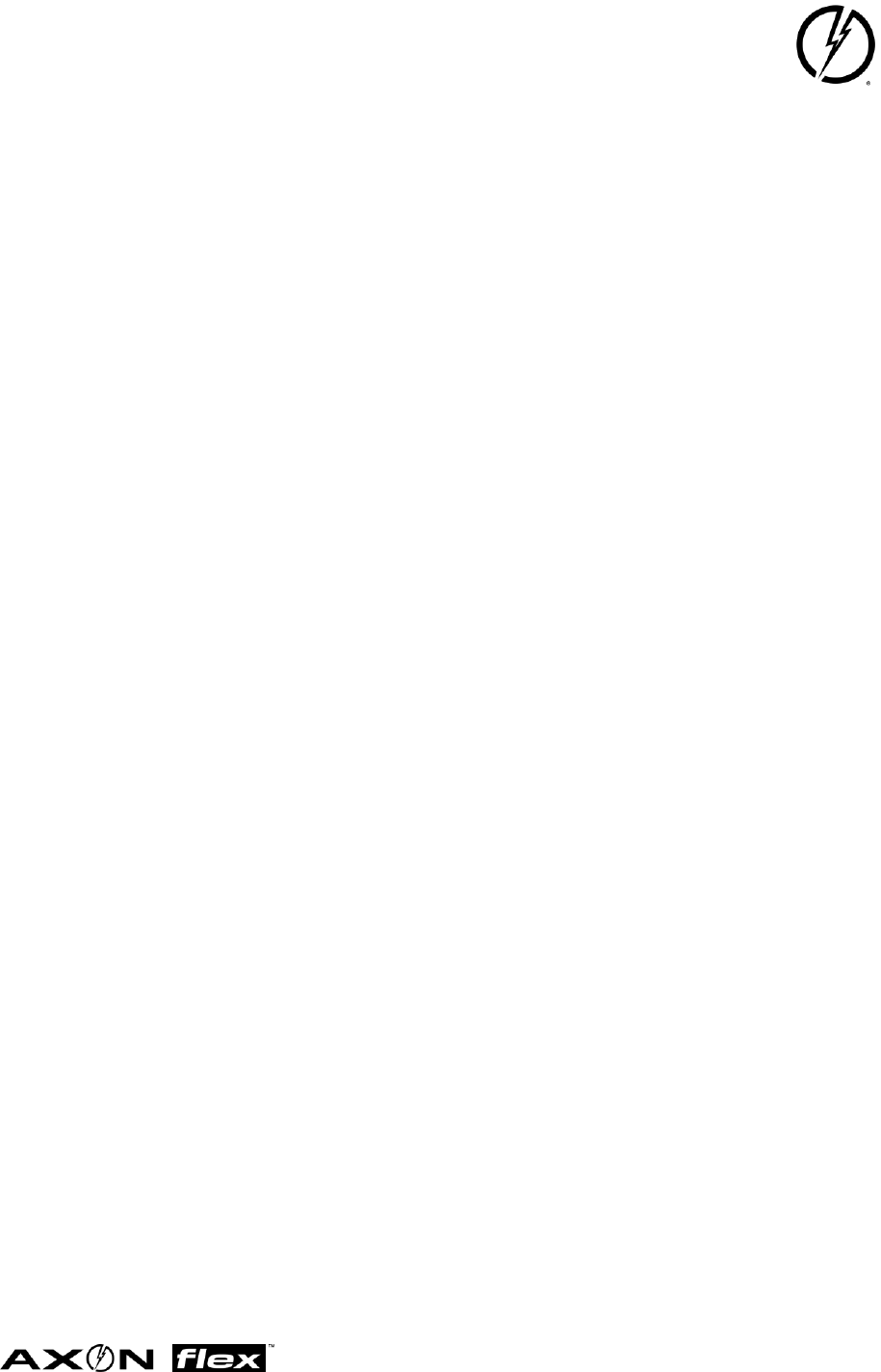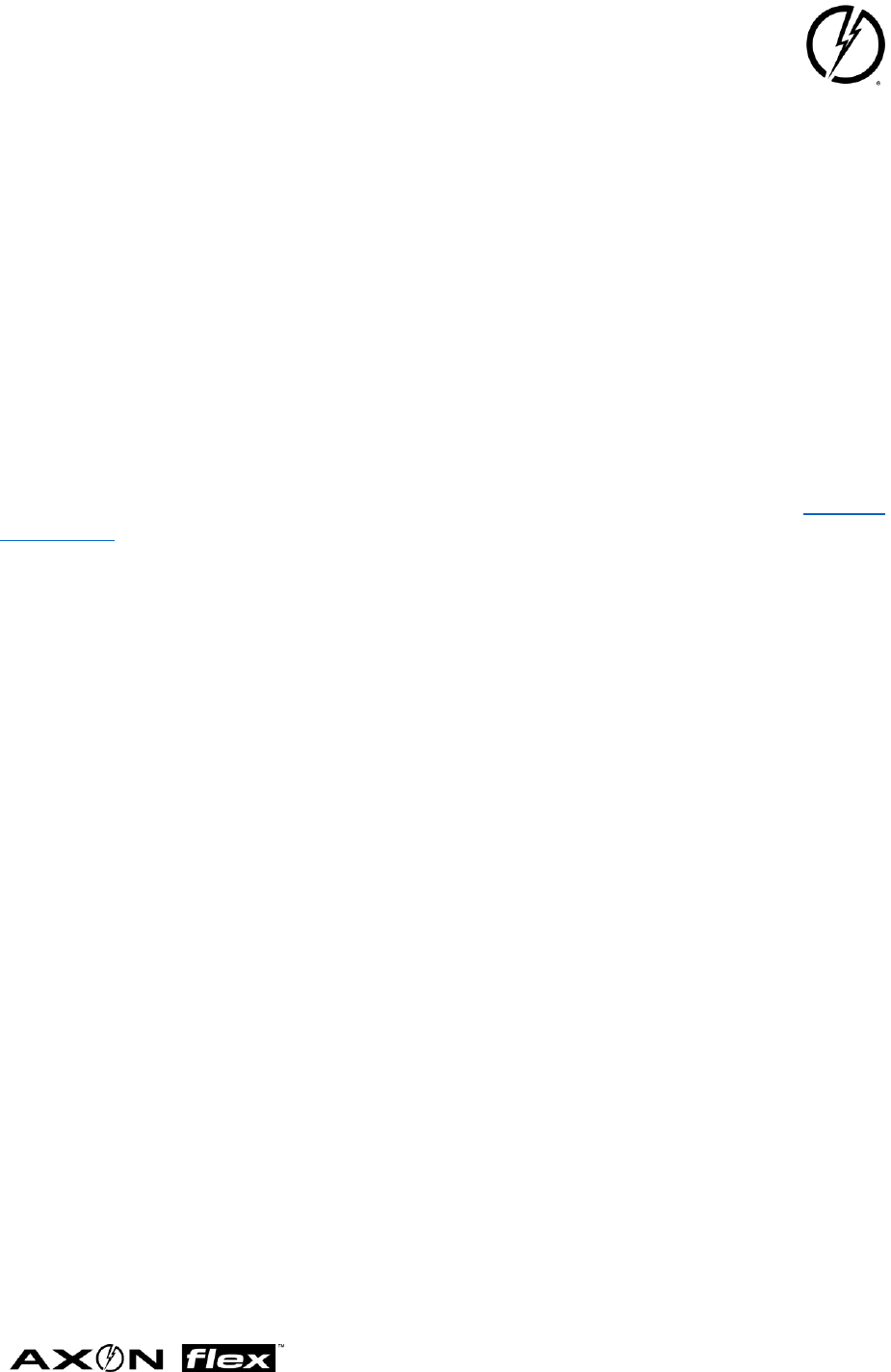Axon Enterprise S00831 AXON Signal Unit User Manual
TASER International AXON Signal Unit
Contents
- 1. User Manual
- 2. Manual
User Manual

Axon Signal Unit
User Manual
Page 1 of 3
Introduction
Axon Signal™ is a communication platform that allows auto activation of Axon Flex® cameras,
upon activation of an emergency vehicle’s light bar. When equipped with an Axon Signal Unit,
light bar activation will start recording in all enabled cameras within range to ensure events are
not missed and multiple perspectives are captured.
Characteristics
Secure Bluetooth broadcast (30 seconds).
Activates all enabled cameras in range (approximately 30 feet)
Requires an in-car wireless Axon Signal Unit and an Axon Flex controller (battery pack)
equipped with Axon Signal technology.
Activation only turns the camera “on”; the officer ends the recording with a 3-second press of
the EVENT button on the Axon Flex controller.
Double-pressing the EVENT button on the Axon Flex controller after the EVENT mode is
activated by the Axon Signal Unit will not interfere with recording.
Radio Waves
Changes or modifications to the equipment not expressly approved by the manufacturer could
void the product warranty and the user’s authority to operate the equipment.
Your wireless device is a radio transmitter and receiver. It is designed and manufactured not to
exceed the emission limits for exposure to radio frequency (RF) energy set by the Federal
Communications Commission (FCC) of the U.S. Government. These limits are part of
comprehensive guidelines and establish permitted levels of RF energy for the general
population. The guidelines are based on standards that were developed by independent
scientific organizations through periodic and thorough evaluation of scientific studies. The
standards include a substantial safety margin designed to ensure the safety of all persons,
regardless of age and health. Before a device model is available for sale to the public, it must be
tested and certified to the FCC that it does not exceed the limit established by the government‐
adopted requirement for safe exposure.
This equipment has been tested and found to comply with the limits for a Class B digital device,
pursuant to part 15 of the FCC Rules. These limits are designed to provide reasonable
protection against harmful interference in a residential installation. This equipment generates,
uses and can radiate radio frequency energy and, if not installed and used in accordance with
the instructions, may cause harmful interference to radio communications. However, there is no
guarantee that interference will not occur in a particular installation. If this equipment does
cause harmful interference to radio or television reception, which can be determined by turning

Axon Signal Unit
User Manual
Page 2 of 3
the equipment off and on, the user is encouraged to try to correct the interference by one or
more of the following measures:
Reorient or relocate the receiving antenna.
Increase the separation between the equipment and receiver.
Connect the equipment into an outlet on a circuit different from that to which the receiver is
connected.
Consult TASER International Customer Service for help.
This device complies with Part 15 of the FCC Rules. Operation is subject to the following two
conditions:
1. This device may not cause harmful interference, and
2. This device must accept any interference received, including interference that may cause
undesired operation.
To comply with FCC RF exposure limits for general population / uncontrolled exposure, the
antenna(s) used for this transmitter must be installed to provide a separation distance of at least
20 cm from all persons and must not be co-located or operating in conjunction with any other
antenna or transmitter.
Section 7.1.3 of RSS-GEN
This Device complies with Industry Canada License-exempt RSS standard(s). Operation is
subject to the following two conditions: 1) this device may not cause interference, and 2) this
device must accept any interference, including interference that may cause undesired operation
of the device.
Section 7.1.3 de RSS-GEN
Cet appareil est conforme aux normes d’exemption de licence RSS d’Industrie Canada. Son
utilisation est soumise aux conditions suivantes : 1) cet appareil ne doit pas causer de
brouillage, et 2) doit accepter tout brouillage, y compris le brouillage pouvant entraîner un
fonctionnement indésirable.
Section 7.1.2 of RSS-GEN
Under Industry Canada regulations, this radio transmitter may only operate using an antenna of
a type and maximum (or lesser) gain approved for the transmitter by Industry Canada. To
reduce potential radio interference to other users, the antenna type and its gain should be so
chosen that the equivalent isotropically radiated power (e.i.r.p.) is not more than that necessary
for successful communication.
To comply with IC RF exposure limits for general population / uncontrolled exposure, the
antenna(s) used for this transmitter must be installed to provide a separation distance of at least
20 cm from all persons and must not be co-located or operating in conjunction with any other
antenna or transmitter.

Axon Signal Unit
User Manual
Page 3 of 3
Section 7.1.2 de RSS-GEN
Conformément à la réglementation d’Industrie Canada, le présent émetteur radio ne peut
fonctionner qu’au moyen d’une antenne d’un seul type et d’un gain maximal (ou inférieur)
approuvé pour l’émetteur par Industrie Canada. Dans le but de réduire les risques de brouillage
radioélectrique pour les autres utilisateurs, il faut choisir le type d’antenne et son gain de sorte
que la puissance isotrope rayonnée équivalente (p.i.r.e.) ne dépasse pas celle requise pour
établir une communication satisfaisante.
Pour se conformer aux limites d’exposition aux radiofréquences fixées par Industrie Canada
relativement aux limites d’exposition humaine, l’antenne utilisée pour cet émetteur doit être
installée à une distance d’au moins 20 cm de toutes les personnes et ne doit pas être installée
ou exploitée conjointement avec d’autres antennes ou émetteurs.
RSS 210 Warning Statement: The installer of this equipment must ensure that the antenna is
located or pointed such that it does not emit RF field in excess of Health Canada limits for the
general population; consult Safety Code 6, obtainable from Heath Canada’s Web site www.hc‐
sc.gc.ca/rpb.
Bluetooth is a trademark of the Bluetooth SIG, Inc.
Axon Signal is a trademark of TASER International, Inc., and Axon Flex and © are trademarks of TASER International, Inc.,
registered in the USA. All rights reserved. © 2015 TASER International, Inc.